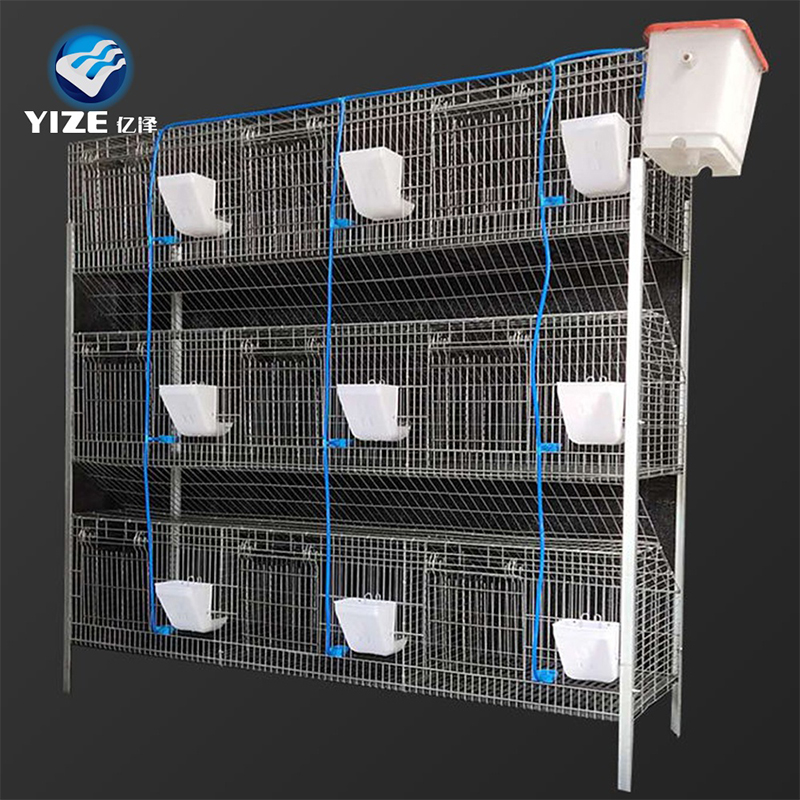poultry exhaust fan
Nov . 30, 2024 12:34 Back to list
poultry exhaust fan
The Importance of Poultry Exhaust Fans in Modern Poultry Farming
In the world of poultry farming, maintaining a suitable environment for the birds is crucial for ensuring their health, productivity, and overall well-being. One of the key components in achieving this goal is the poultry exhaust fan. These specialized fans play an essential role in regulating temperature, humidity, and air quality within poultry houses, directly impacting the productivity and welfare of the birds. This article will explore the importance of poultry exhaust fans, their functionality, and best practices for their use in modern poultry farming.
Understanding Poultry Exhaust Fans
Poultry exhaust fans are powerful ventilation systems designed to remove stale air from poultry houses and replace it with fresh, uncontaminated air from the outside. They work by creating a negative pressure within the building, which helps to expel warm and humid air that can be detrimental to the health of the birds. By maintaining a consistent airflow, these fans help to control the internal environment, making it more conducive for poultry growth.
Role in Temperature Control
One of the primary functions of exhaust fans is temperature regulation. Poultry are highly sensitive to extreme temperatures, and prolonged exposure can lead to heat stress and reduced productivity. In the winter, proper ventilation helps to prevent the buildup of moisture and ammonia, which can pose significant health risks. Conversely, during hot weather, exhaust fans help to lower the temperature within the poultry house, providing a cooler environment that promotes comfort and feeding efficiency. The use of exhaust fans helps farmers maintain optimal conditions year-round.
Humidity and Air Quality Management
In addition to temperature control, poultry exhaust fans play a critical role in managing humidity and air quality. High humidity levels can lead to respiratory problems in birds and promote the growth of harmful pathogens. By effectively removing excess moisture from the air, exhaust fans help to maintain a healthy environment, reducing stress on the birds and minimizing the risk of disease outbreaks.
Moreover, adequate ventilation also helps to dilute harmful gases, such as ammonia and carbon dioxide, which are produced by the birds’ waste. Prolonged exposure to high levels of these gases can lead to serious health issues. By regularly exhausting stale air and bringing in fresh air, exhaust fans contribute to improved air quality, which is essential for the overall health of the flock.
poultry exhaust fan

Energy Efficiency and Technology
Modern poultry exhaust fans are equipped with advanced technology that allows for efficient energy use. Variable speed motors and automated control systems adapt the fan operation to the current environmental conditions, ensuring optimal performance while minimizing energy costs. This adaptability not only helps in conserving energy but also enhances the sustainability of poultry farming operations.
Incorporating energy-efficient exhaust fans can significantly reduce operational costs, providing farmers with a dual benefit—enhanced bird welfare and economic savings. As the demand for poultry products continues to rise, adopting energy-efficient practices becomes increasingly important in maintaining competitive advantages in the market.
Best Practices for Exhaust Fan Management
To maximize the benefits of poultry exhaust fans, farmers should follow several best practices 1. Proper Placement Fans should be strategically placed to ensure even airflow throughout the poultry house. This includes positioning them away from obstructions that might impede air circulation. 2. Regular Maintenance Routine maintenance of exhaust fans is vital for optimal performance. This includes cleaning the fan blades, inspecting the motor and housing for wear, and ensuring that all electrical connections are secure.
3. Monitoring Environmental Conditions Utilizing sensors and monitoring systems can help farmers track temperature, humidity, and air quality levels. This data can inform proactive adjustments to ventilation systems, ensuring that poultry are always kept in optimal conditions.
4. Training and Knowledge Educating staff on the importance of ventilation and proper fan operation can lead to better overall management of poultry houses. Understanding how to respond to changing environmental conditions is crucial for ensuring the health and productivity of the flock.
Conclusion
Poultry exhaust fans are an indispensable tool in modern poultry farming. They not only help in maintaining a suitable environment for birds but also contribute to better productivity, health, and welfare. As technology continues to evolve, the effectiveness and efficiency of these systems will only improve, making them a vital investment for poultry producers. By implementing best practices and embracing innovative solutions, farmers can ensure the success of their operations while supporting the well-being of their birds.
-
Automatic Feeding Line System-Pan Feeder Nipple Drinker|Anping County Yize Metal Products Co., Ltd.
NewsJul.29,2025
-
Hot Sale 24 & 18 Door Rabbit Cages - Premium Breeding Solutions
NewsJul.25,2025
-
Automatic Feeding Line System Pan Feeder Nipple Drinker - Anping County Yize Metal Products Co., Ltd.
NewsJul.21,2025
-
Automatic Feeding Line System Pan Feeder Nipple Drinker - Anping County Yize Metal Products Co., Ltd.
NewsJul.21,2025
-
Automatic Feeding Line System - Anping Yize | Precision & Nipple
NewsJul.21,2025
-
Automatic Feeding Line System - Anping Yize | Precision & Nipple
NewsJul.21,2025






